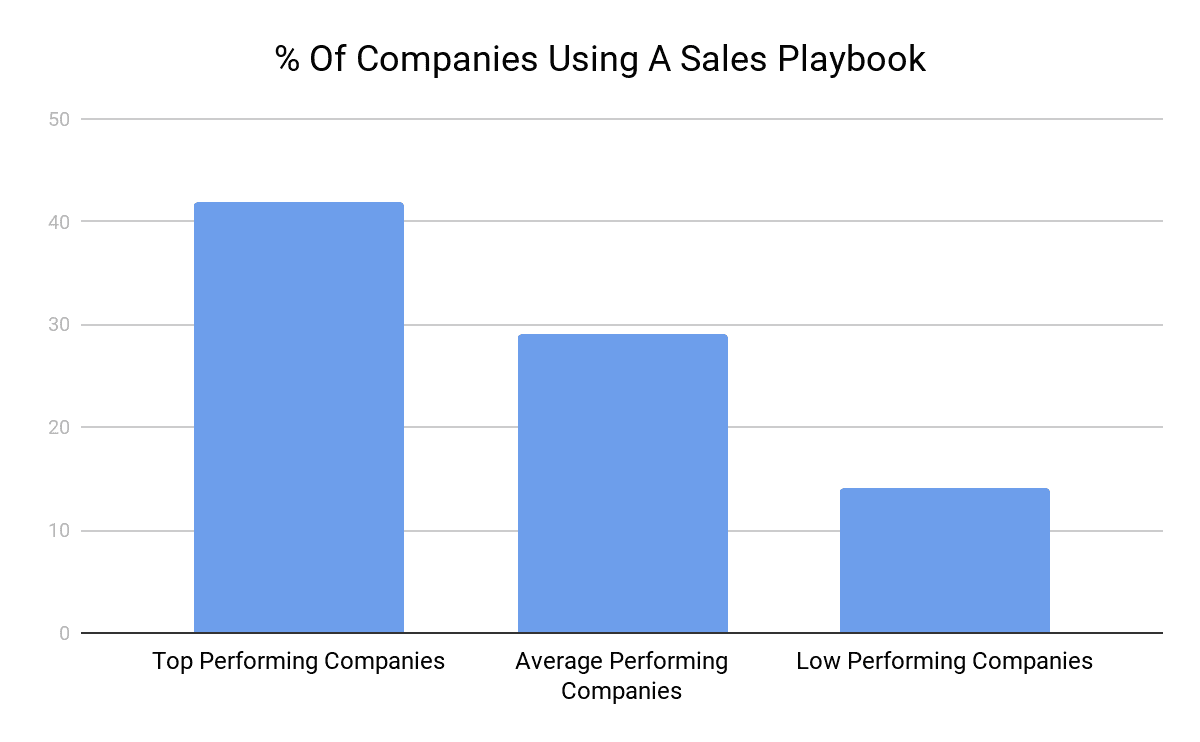Aspiring to develop a top-performing sales program for your startup can be a daunting task. Arguably the most important piece of a stellar sales program lies in having clear and defined foundations, AKA a killer Sales Development Playbook. According to a study by Aberdeen, best in class companies follow a sales playbook 3x as often as bottom-tier companies.

Think of it as a business plan for revenue. Without one, you may find your company constantly following impromptu processes, which any great sales leader will tell you will eventually fall flat as the organization scales, leading to lower close-rates and longer sales cycles.
This is critical because in the hyperspeed world of startups, failure to scale can be lethal. Even the most promising startups with the greatest technology can still fall flat without the right foundations.

The playbook isn’t just important to grow revenue either. It can be a powerful onboarding tool, getting new hire reps better accustomed to processes and arming them with the tools they need to be successful faster, which can reduce turnover and lead to higher job satisfaction.
No matter where your organization is at, the importance of a Sales Playbook simply cannot be overlooked. As an early-stage startup, lacking a playbook to guide your growth strategy could be one of the mostly costly mistakes any Founder or Sales Leader can make.
Elements of a Sales Development Playbook
Playbooks can range widely in size depending on the stage of the company, number of products/services being offered, the scope of the market, the complexity of the sales cycle and more. Rarely will two companies have identical playbooks, so it’s important to focus on what’s going to be important to you now and continue to expand the playbook as your company grows. Here are some key aspects that should be considered when building a playbook.
Who are we?
- By defining who you are as a business, you can start to formulate how you want to be viewed by your market. Define your history, mission, value prop, and differentiators.
What are our goals?
- Not every playbook is equal. Playbooks should be built specifically to address what stage a company is at. By defining your goals, a company can build the right processes around achieving those goals and build a roadmap to success.
What are we selling?
- This may seem obvious, but the most comprehensive playbooks will cover every aspect of what you offer. B2B buyers can be overly finicky, so detailing the ins-and-outs of your product or service will make it clear how you can get creative to meet their needs, and when to shut down a deal that falls beyond your capabilities.
How are we selling it?
- Map out your sales process from start to finish, from how are leads being driven into the pipeline to how they are being closed. Define the different stages, what and who is required at each stage, and what is the end deliverable.
Who are we selling to?
- By defining your Ideal Customer Profile (ICP) and Buyer Persona, you will be able to clearly articulate who you should be targeting, why you are targeting them, and how you should be targeting them.
- Include detailed information on specific criteria for what makes a company fit within your ICP, and also detail what criteria would make a company not a fit.
- For Buyer Personas, detail what buyer roles you should target by title, then create specific buyer personas that each role can fit within. Clearly define their core responsibilities, KPIs, challenges/pains and how you can help them directly. Include any insights, tips or stats that are relevant to them as well that you can use to catch their attention or get them thinking about problems they may not realize they have or solutions they may not have considered.
- Include your Total Addressable Market (TAM) for added thoroughness.
- Detail every company in your market that meets the criteria of your ICP. This is crucial as you scale because you will need a record of your market as you begin to develop account-based approaches and define territories.
How will we reach them?
- Outline your outreach structure / cadence / sequence to make it clear how you will be approaching the market, what channels you will be using, and what the timeline will look like.
- Detail the different types of messaging you will be testing. This can be split up multiple ways, but we recommend starting with the persona and you can break it down by industry from there. Refer back to your buyer personas to create messaging that is highly relevant to your prospect, focusing on what’s important to them, what they may struggle with, and how you can make those problems better.
What are prospects saying?
- By building a running list of objections, you can craft thoughtful and specific responses that reps can use in the future to handle objections with greater confidence.
How are we gauging success?
- Define KPIs and benchmarks to establish a baseline for success. This will not only help you understand where you are struggling, but will also help you accurately forecast the numbers it will take to achieve your goals.
How do we show success?
- In this section, include resources that reps can refer to when building a case for a prospect. Case studies, testimonials, company specific stats, even stories specific to a persona or industry can be useful even when they aren’t in the form of a case study. You want to arm your sales team with everything they need to keep the deal moving, and make it easy to find it.
Additional pieces to consider adding
- Comp plan
- Event strategy
- Corporate structure
Remember, the playbook should continue to be a living, breathing document that grows with your organization. You probably won’t get it perfect the first time around and that’s normal. If you can get the foundations in place, you can continue to strengthen them as you learn. The goal isn’t to get it right immediately, but rather get a clear outline of your sales development processes so you can continue to improve them and learn from them.


